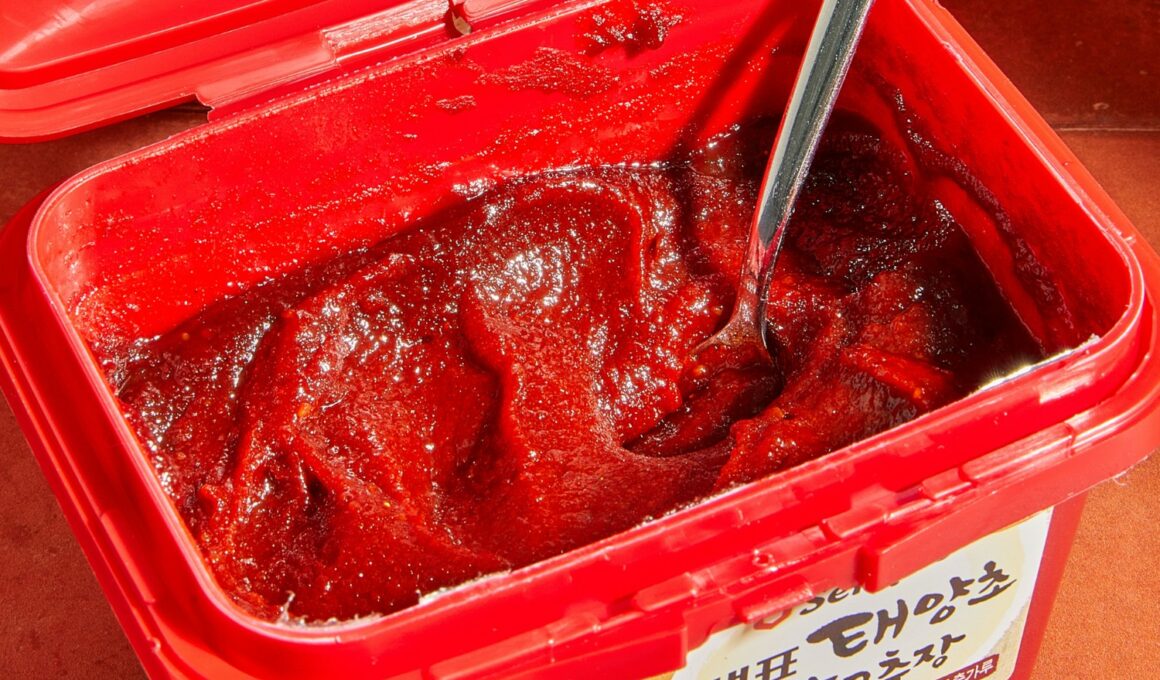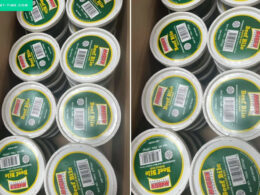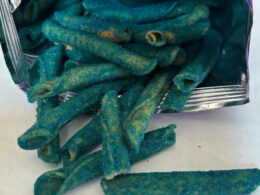In This Article Show
Gochujang, with its vibrant red hue and complex flavor profile – a delightful blend of sweet, spicy, and umami – has become an indispensable ingredient for lovers of beef in relation to Korean cuisine worldwide.
Yet, as with many culinary treasures, the question arises: How do we keep it at its best? Proper storage of condiments and sauces retains their original flavor and ensures they remain safe for consumption. For those who have recently discovered the joys of gochu jang or even long-time aficionados, understanding its storage needs is crucial.
In this article, we’ll delve deep into whether gochu jang needs refrigeration, exploring its composition, traditional storage methods, and how to enjoy its flavors for as long as possible.
Understanding Go Chu Jang: A Culinary Staple
In the vast landscape of world cuisines, certain ingredients stand out not just for their flavors but for their cultural significance – and gochu jang, or gochujang, is undoubtedly one of them in Korean gastronomy.
Origins and Role in Korean Cuisine
Gochujang’s history stretches back centuries, rooting itself deeply in the culinary traditions of Korea. Originally developed as a means to preserve bountiful harvests and to add depth to dishes, it has since become an essential component in numerous Korean dishes.
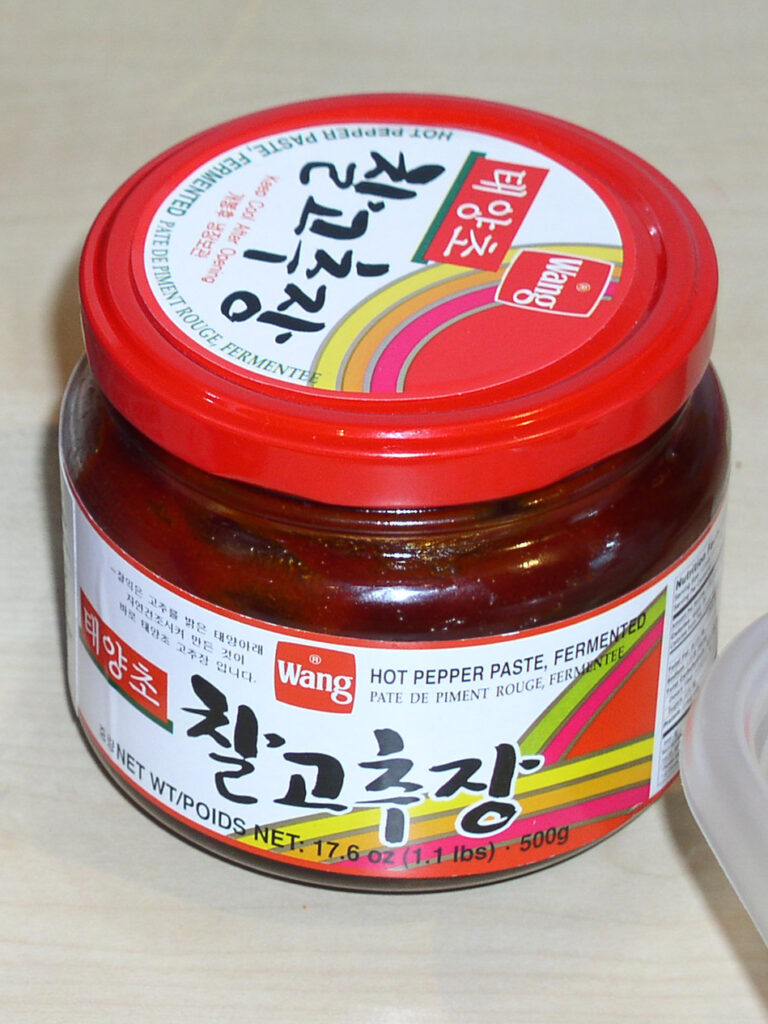
From the spicy kick in bibimbap to being a vital element in stews and marinades, gochujang brings a unique combination of heat and sweetness that’s hard to replicate.
Great deals to snatch for your little ones 🎉
Ingredients and Composition
At its core, gochujang is a fermented paste made primarily from red chili powder, glutinous rice, fermented soybeans, and salt. The fermentation process, often taking months or even years, is what gives gochujang its deep, rich flavor and characteristic tang.
The rice provides a subtle sweetness, the soybeans an umami depth, and the red chili, of course, lends its fiery touch.
Evolution Over Time
While the fundamental ingredients of gochujang have remained relatively constant, there have been innovations and variations over time. Modern iterations might include additional sweeteners or varying types of grains. Some are more viscous, while others lean towards a runnier consistency, depending on the intended use or regional preferences.
Understanding the essence of gochujang, its rich history, and its intricate composition is the first step in appreciating its value. This appreciation naturally leads to a desire to preserve its quality, prompting the question of its storage requirements, which we’ll address in this guide.
General Storage Guidelines for Condiments
Condiments, those sidekicks to our main dishes, play a pivotal role in enhancing and elevating the flavors of meals. While they pack a punch in the taste department, understanding how to store them correctly is paramount for maintaining their essence and ensuring longevity. Here’s a quick guide on the general storage principles for a range of condiments:
1. Ingredients Matter
The composition of a condiment usually dictates its storage requirements. For instance, items rich in vinegar or salt, like soy sauce or pickles, naturally resist spoilage due to their preservative qualities. In contrast, condiments with dairy or fresh ingredients might demand refrigeration.
2. Role of Preservatives
Many store-bought condiments contain added preservatives that extend their shelf life. These can help resist bacteria and fungal growth, making it safe to store items like ketchup or mustard in the pantry for a while, even after opening.
3. Check the Label
A straightforward yet crucial tip – always check the storage recommendations on the product’s label. Manufacturers often provide guidelines, such as “Refrigerate after opening,” which can clear up any confusion.
4. Mind the Expiry Date
Even with the best storage practices, condiments won’t last indefinitely. Regularly check the expiration dates and be wary of any off smells or changes in appearance.
5. Avoid Cross-Contamination
Always use clean utensils when dipping into condiment containers. Introducing foreign particles or other food remnants can accelerate spoilage and introduce bacteria.
6. Seal Tightly
Ensure that condiment containers, jars, or bottles are sealed tightly after each use. This practice keeps contaminants out and retains the freshness of the product.
Note on Natural and Organic Products
Condiments without artificial preservatives, especially organic or homemade versions, typically have a shorter shelf life. They often require refrigeration and should be consumed relatively quickly.
By adhering to these general guidelines, not only can one maintain the quality and taste of various condiments, but also ensure that they remain safe to consume.
The Case for Refrigerating Go Chu Jang
The depth and richness of gochu jang’s flavor come from its meticulous fermentation process, which imbues it with unique taste notes and characteristics. While fermentation naturally acts as a preservation method, there are several compelling reasons to consider refrigerating gochu jang once opened:
1. Maintaining Freshness
Refrigeration can significantly slow down the fermentation process. While fermentation is crucial for achieving the initial flavors of gochu jang, overextended fermentation at room temperature after opening might lead to overly pronounced sour notes or an imbalance in its flavor profile.
2. Preventing Mold and Spoilage
The moist environment inside a gochu jang container can be a breeding ground for mold, especially if any contaminants are introduced. Storing it in a cooler environment like the refrigerator curtails the growth of unwanted organisms, ensuring it remains safe to consume.
3. Retaining its Vibrant Color
One of the appealing attributes of gochu jang is its bright, fiery red hue. Over time, exposure to air and light can cause this color to dull. Keeping it in the fridge, especially in a sealed or air-tight container, helps preserve this vibrant coloration.
4. Consistency and Texture
Some users have noted that gochu jang can slightly thicken when stored in the refrigerator, which can be a desirable trait for certain dishes. This thicker consistency can add a rich texture to recipes where the paste needs to coat ingredients evenly.
5. Extended Shelf Life
As with many foods, cooler temperatures extend the shelf life. While gochu jang has a relatively long shelf life due to its ingredients and fermentation, refrigeration can further prolong its usability, allowing you to enjoy it for an extended period.
6. Protection from Contaminants
Every time the container is opened, there’s potential for exposure to bacteria, yeast, or other contaminants. In the cooler environment of a fridge, the growth and spread of these potential contaminants are significantly slowed down.
While there’s a strong case for refrigerating gochu jang, especially after opening, it’s worth noting that not everyone agrees.
Traditional methods and certain conditions might allow for room temperature storage, a topic we’ll explore further in the next section. But for those aiming for maximum freshness and extended shelf life, the fridge is your gochu jang’s best friend.
When Room Temperature Might Be Okay
Gochujang’s storied history and traditional practices provide insights into how it was stored before modern refrigeration became commonplace. There are circumstances where keeping gochu jang at room temperature might be appropriate:
1. Traditional Storage Methods
Historically, gochu jang was stored in earthenware pots called ‘onggi,’ which were kept outdoors. The permeable nature of these pots allowed the paste to breathe while protecting it from direct sunlight and contaminants.
These pots, combined with Korea’s cold winter months, provided a natural form of refrigeration, slowing down fermentation and prolonging the life of the gochu jang.
2. Sealed and Unopened Containers
If you’ve purchased a factory-sealed container of gochu jang and haven’t broken the seal, it’s generally safe to store it at room temperature until opened. The sealed environment keeps contaminants out and ensures the contents remain stable.
3. Short-Term Use
If you plan to consume your gochu jang quickly (within a few weeks to a month), room temperature storage might suffice, especially if the product is kept in a cool, dark place and used with clean utensils.
4. Preservative Content
Some commercially-produced gochu jang varieties might contain added preservatives that extend their shelf life, even at room temperature. Always check the label for guidance and consider the manufacturer’s recommendations.
5. Climate Considerations
If you live in a cooler climate or during seasons with lower average temperatures, gochu jang might fare well outside the fridge. Conversely, in hotter and more humid environments, refrigeration becomes even more critical.
6. Aesthetic Preferences
Some purists believe that refrigeration can slightly alter gochu jang’s flavor, making it less dynamic. While this is subjective, those who use gochu jang frequently and are attuned to its nuances might prefer to keep it at room temperature to maintain its ‘authentic’ taste.
It’s essential to recognize that while room temperature storage can be suitable under specific conditions, it also carries inherent risks. ‘
Regularly inspecting your gochu jang for signs of spoilage, such as off smells, mold growth, or texture changes, is crucial if opting to store it outside the fridge. And always prioritize safety over tradition or convenience.
Notable Changes in Taste and Texture Over Time
Every food product, especially those that are fermented, undergoes some transformation over time, both in taste and texture. Gochujang, given its rich complexity from fermentation, is no exception. Here’s what you might observe as it ages, whether in the fridge or at room temperature:
1. Deepening of Flavors
The beauty of fermented products lies in their evolving taste profiles. Over time, the flavors in gochu jang can become more profound and pronounced. The sweetness might mellow out, the spiciness can intensify, and the umami notes can deepen, leading to a more robust overall flavor.
2. Increase in Tangines
As fermentation continues, especially if stored at room temperature, gochu jang can develop a tangier, slightly sour note. This is due to the ongoing action of lactic acid bacteria present in the paste.
3. Texture Variations
Depending on storage conditions, the consistency of gochu jang might change. In the fridge, it can thicken slightly, whereas at room temperature, especially in warmer climates, it may become a tad runnier. Always ensure these changes in consistency aren’t due to spoilage or mold growth.
4. Color Shifts
One of the first noticeable changes with prolonged storage can be in the color of gochu jang. Over time, its vibrant red can darken, turning a deeper shade of brownish-red. While a slight change in color can be natural, drastic shifts might indicate spoilage.
5. Presence of Crystals
Occasionally, small sugar or salt crystals might form in gochu jang. This phenomenon is natural and doesn’t indicate spoilage. Simply stirring the paste can help redistribute and dissolve these crystals.
6. Changes in Aroma
The scent of gochu jang is a mix of spicy, sweet, and fermented notes. Over time, especially if contaminants are introduced, the aroma might change, becoming off or overly sour. Always trust your nose – if it smells off, it’s best to discard the product.
Understanding these changes can help you determine the quality of your gochu jang over time and decide whether it’s still good to use. It’s always crucial to remember that while certain changes are natural, any signs of spoilage or mold should never be ignored. Safety first!
Other Common Korean Condiments and Their Storage Needs
Korean cuisine boasts a plethora of condiments, each adding its own unique flavor profile and texture to dishes. As with gochu jang, knowing how to store these condiments correctly is crucial for preserving their taste and extending shelf life.
Let’s delve into some popular Korean condiments and their recommended storage methods:
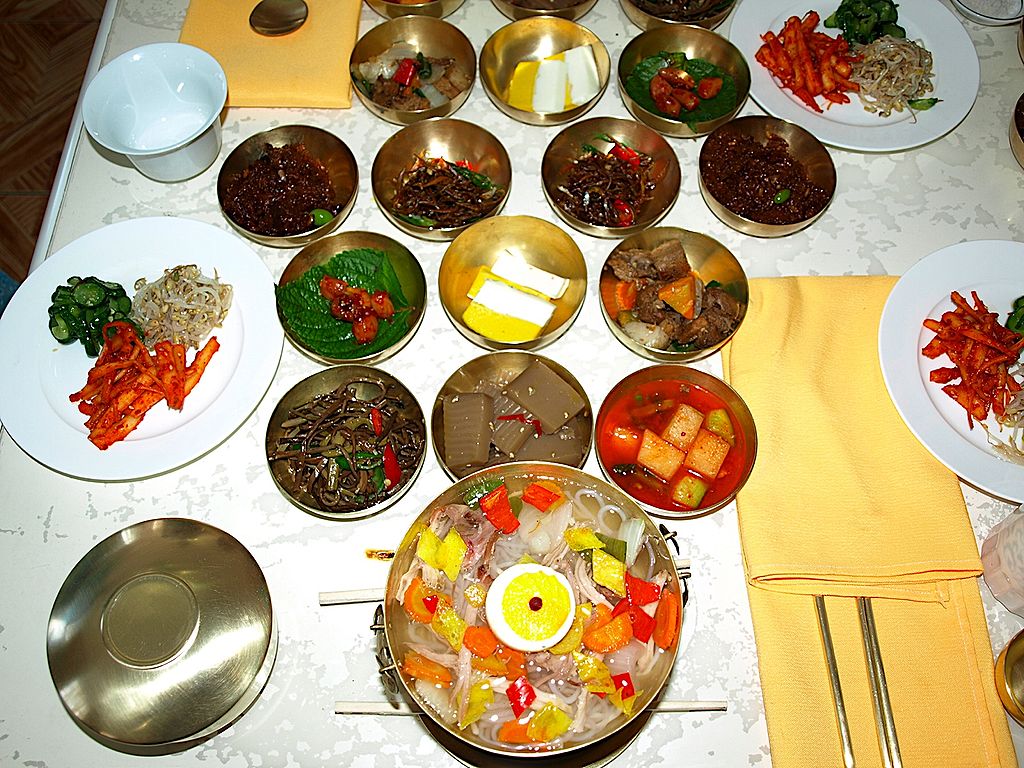
1. Doenjang (Soybean Paste)
- Storage: Much like gochu jang, doenjang benefits from refrigeration after opening. The cool environment helps maintain its texture and prevents rapid fermentation, which could alter its taste.
- Shelf Life: When refrigerated, it can last up to a year, but always check for signs of spoilage.
2. Ganjang (Soy Sauce)
- Storage: Soy sauce can be stored at room temperature if unopened. After opening, while refrigeration isn’t strictly necessary due to its high salt content, it can prolong freshness and flavor.
- Shelf Life: Typically, it remains fresh for up to two years, but this can vary based on brand and specific ingredients.
3. Kimchi
- Storage: This fermented vegetable staple should always be refrigerated, especially after opening. Doing so will slow down the fermentation, preventing it from becoming overly sour too quickly.
- Shelf Life: In the refrigerator, kimchi can last several months, but its flavor will evolve, becoming tangier over time.
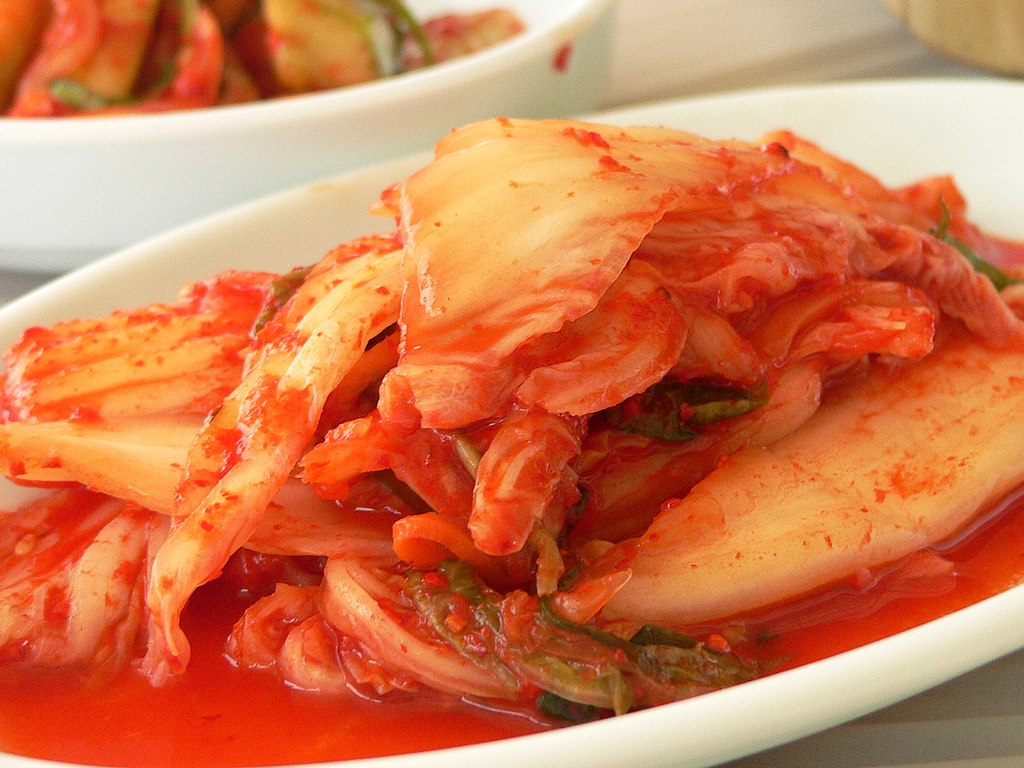
4. Gireumjang (Seasoned Sesame Oil)
- Storage: Store in a cool, dark place to prevent it from becoming rancid. Refrigeration can extend its life but may cause the oil to solidify; it will return to liquid form at room temperature.
- Shelf Life: Typically, it lasts up to a year if stored correctly.
5. Ssamjang (Wrapping Sauce)
- Storage: Made from a mix of doenjang and gochu jang with added ingredients, it’s best to refrigerate ssamjang after opening.
- Shelf Life: In the fridge, it can remain fresh for several months.
6. Jeotgal (Salted Seafood)
- Storage: Given its raw seafood content, jeotgal should always be refrigerated. Ensure it’s submerged in its brine to maintain freshness.
- Shelf Life: If stored properly, it can last for several months in the refrigerator.
As always, it’s essential to consult specific product labels for any storage recommendations and regularly check condiments for any signs of spoilage. Proper storage ensures not only the best taste but also safety in consumption.






